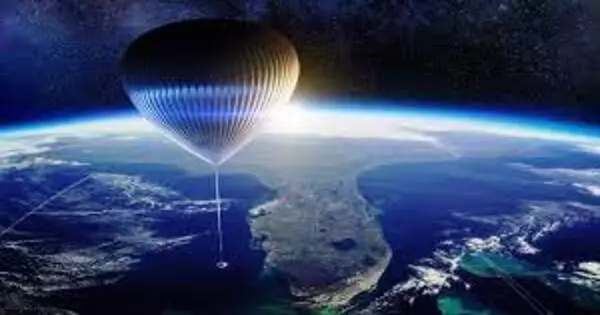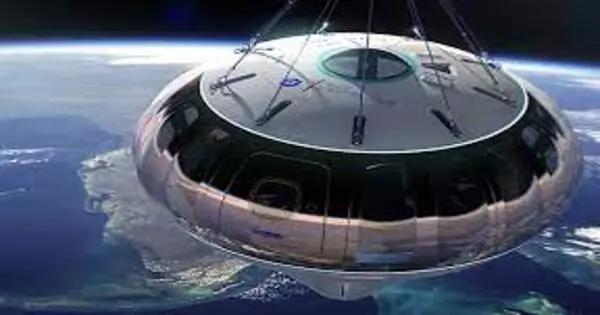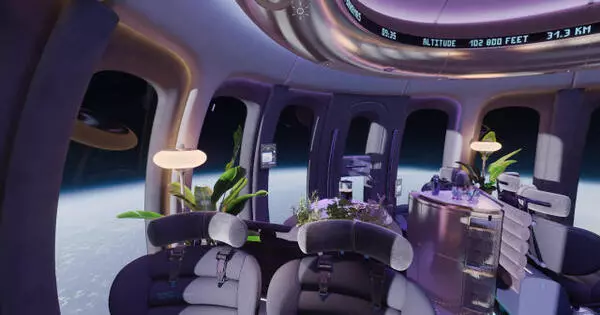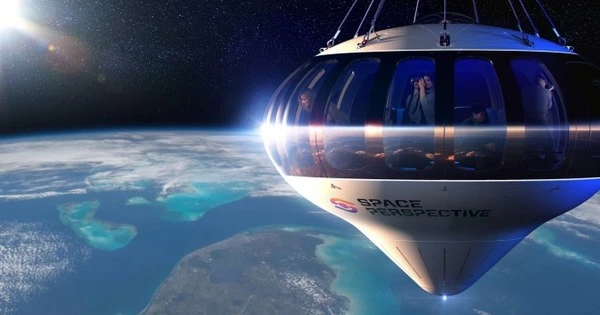A new entrant in the space tourism business promises tourists views of Earth’s curvature from the comfort of a luxury cabin hoisted into the upper atmosphere by a massive balloon.
On Tuesday, Space Perspective unveiled renderings of their futuristic cabins, which they plan to launch from Florida’s Kennedy Space Center in late 2024. So far, almost 600 tickets have been sold at a cost of $125,000 apiece.
The atmosphere contrasts with the clean and sterilized capsules of its competitors, with five-foot (1.5 meter) high windows, deep seats, dark purple tones, and quiet lighting.
“We are above 99 percent of Earth’s atmosphere,”
co-founder Jayne Poynter
The “Space Lounge” within the company’s Neptune capsule is completed by WiFi access and a beverage bar.
It is debatable if it truly qualifies as spaceflight.

The balloon reaches an altitude of 20 miles (30 kilometers), which is significantly lower than competitors Virgin Galactic, which reaches an altitude of slightly more than 50 miles, or Blue Origin, which exceeds the Karman Line, the globally recognized space border, at 62 miles above sea level.
Crew Dragons from SpaceX travel even further into space.
However, 20 miles is still far higher than commercial jets, which typically ascend approximately six miles.
“We are above 99 percent of the Earth’s atmosphere,” co-founder Jayne Poynter told AFP, implying that passengers will see the inky blackness of space.
There is no additional training necessary. The balloon travels at a leisurely 12 miles per hour (19 kilometers per hour), and the company bills itself as a greener, zero-emissions alternative to rocket fuel.
They want to get the hydrogen for the balloon from renewable sources rather than fossil fuels.

The cost of the two-hour-up, two-hour-gliding, and two-hour-down journeys, which conclude with an ocean splashdown, is much cheaper than the $450,000 cost of a spaceplane ride with Virgin Galactic.
Blue Origin does not divulge its fees, but they are expected to be far higher than four entrepreneurs who traveled to the International Space Station on a SpaceX ship paid the business Axiom Space a reported $55 million each for the opportunity.
“We wanted to develop a manner that truly transformed people’s perceptions about spaceflight, making it much more relatable and accessible,” Poynter said.
One thing the passengers will not feel is a sense of weightlessness.

Passengers on Virgin Galactic’s spaceplane and Blue Origin’s rocket can unbuckle and float after the rocket engines are turned off, but the ship continues to speed upwards for a few minutes before gravity pulls them back down.
Passengers on SpaceX spaceships and the International Space Station (ISS) experience apparent weightlessness because the vehicles orbit the Earth.
Space Perspective intends to fly 25 times in its first year, with all tickets already reserved.





